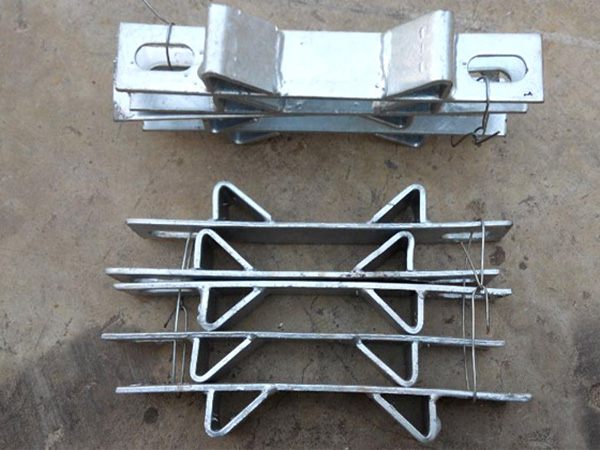-
Working Hours: (00:00 - 24:00)
24/7 Service -
Email:
1029975446@qq.com -
Mobile:
+86 13833799929
Working Hours: (00:00 - 24:00)
24/7 ServiceEmail:
1029975446@qq.comMobile:
+86 13833799929
1、 Basic concepts
M pad iron is a metal pad iron used for mechanical equipment installation, named after its shape resembling the letter "M" (usually with an arc-shaped or multi folded structure on the upper surface). Its core function is to adjust the levelness, elevation, and verticality of the equipment, while evenly transferring the equipment load to the foundation surface and reducing local stress concentration. M-pad iron is often made of cast iron or steel plate, which has the characteristics of good strength, stability, and easy adjustment. It is widely used in the installation engineering of heavy equipment such as machine tools, compressors, and motors.
2、 Structural characteristics and classification
(1) Typical structure
Main structure: composed of upper and lower base plates and a curved or folded support arm in the middle, forming a cross-sectional shape similar to an "M".
Upper base plate: In contact with the equipment base, the surface is flat (roughness ≤ Ra12.5), and the fit is confirmed to be tight.
Bottom plate: in contact with concrete foundation or floor, with a large area to disperse loads.
Support arm: connected to the upper and lower base plates, providing elastic adjustment space through curved or folded design, making it easy to adjust the height with diagonal iron or bolts.
Key parameters:
Thickness: 10-50mm (selected according to equipment load);
Length: 100~500mm, width: 50~300mm (to cover the distance between equipment anchor bolts).
(2) Common Categories
Classified by material
Cast iron M-pad iron: with good performance, suitable for equipment with high vibration (such as crushers and forging presses).
Steel plate welding M-pad iron: good strength, flexible processing, customizable non-standard size, used for medium-sized equipment.
Divided by adjustment method
Fixed M-pad iron: The upper and lower base plates are fixedly connected and need to be used in conjunction with inclined pad iron or adjusting bolts.
Adjustable M-pad iron: The support arm has threaded holes, and the height can be adjusted directly through bolts without the need for additional diagonal iron (such as M-pad iron with jack structure).
3、 Core role and application scenarios
Equipment leveling and alignment
By increasing or decreasing the number of shim layers or adjusting the bolts, the horizontal deviation of the equipment should be ≤ 0.1mm/m (accuracy suitable for equipment such as fine machine tools requires ≤ 0.05mm/m).
Load transmission and dispersion
Transfer the concentrated load of the equipment (such as the self weight of the motor and the vibration load during operation) evenly to the foundation to avoid local concrete compression damage.
Compensate for basic defects
Attentive service is needed to replace the traditional cement mortar grouting layer when the basic surface flatness is insufficient (such as when the concrete pouring error is ≥ 3mm).
Typical application scenarios:
Industrial equipment installation: such as base support for large fans, pump sets, printing machines, and injection molding machines.
Careful adjustment of machine tools: Grinding machines, boring machines, and other equipment with suitable precision need to be adjusted with M-pad iron to achieve slight deviation (error ≤ 0.02mm).
Steel structure support: a transitional connection between steel platforms, equipment supports, and concrete foundations.
4、 Installation points and construction process
(1) Preparation before installation
Basic inspection
Measure the elevation and flatness of the foundation surface, with allowable deviation:
Elevation ± 5mm, surface flatness ≤ 2mm/m (checked with a 2m ruler and feeler gauge).
Remove the floating slurry and oil stains on the foundation surface, and perform chiseling treatment (if secondary grouting is required).
Selection of pad iron
Calculate the bearing capacity of a single set of pad iron based on the weight of the equipment (formula: pad iron area ≥ equipment load/allowable compressive strength of the foundation × Enron coefficient 1.5).
Example: The total weight of the equipment is 10t, the basic compressive strength is 15MPa, and the area of a single set of pad iron is ≥ (10 × 10 ⁴ N)/(15 × 10 ⁶ Pa) × 1.5 ≈ 1000mm ².
(2) Installation process
Positioning and laying out
According to the position of the bolt holes on the equipment base, mark the placement points of the shim on the foundation (usually located on both sides of the anchor bolt and below the main force point of the equipment).
Placement and adjustment of shims
Fixed M-pad iron:
Place flat pad iron (thickness ≥ 10mm) on the bottom layer, stack M pad iron on the top layer, and adjust the height by driving inclined pad iron (slope 1:10~1:20).
Each group of shims shall not exceed 5 layers, with a total height of ≤ 100mm, and shall be fixed with epoxy resin or welding between layers.
Adjustable M pad iron:
Place the shim directly on the surface of the foundation and rotate the top bolt until the equipment is level (with real-time monitoring using a level gauge).
Equipment hoisting and preliminary fixation
Lift the equipment above the shim, thread the ground foot bolts and tighten them preliminarily. Adjust the vertical and horizontal centerline deviation of the equipment to ≤ 3mm through the shim.
Secondary grouting and fastening
Pour non shrink grouting material (such as C30 fine aggregate concrete) around the pad iron and cure for more than 7 days.
After the strength of the grouting layer reaches 75%, tighten the anchor bolts in diagonal order and retest the levelness of the equipment.